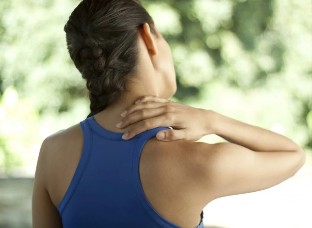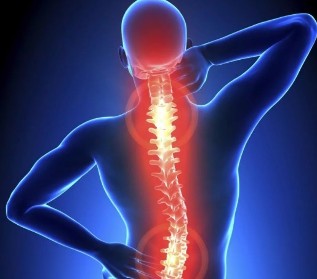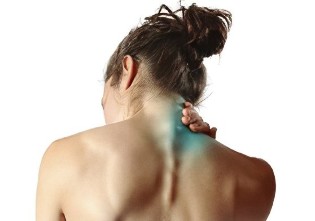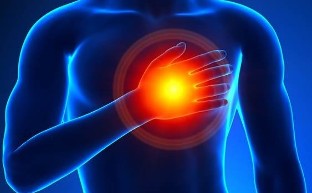Osteochondrosis of the cervical spine is a progressive disease, which is a degenerate-dystrophic change of the intervertebral discs, accompanied by their deformation and the change of the structure.

The cause of the disease. The main reason in violation of metabolic processes in the body, and therefore, the deterioration of the vascularization of the intervertebral disks. Rarely the disease occurs as a result of the cervical injury the division of the vertebral column. Contribute to the emergence of a degenerative disc disease: the lack of the mode of life, poor posture, long "the" office in front of the computer, etc
Osteochondrosis of the cervical spine, the clinical
The treatment of cervical osteoarthritis the clinical methods is of the medicine. In the process of the treatment methods used by tibetan the medicine points massage and herbal medicine the methods of chinese medicine – it is, in the first place, acupuncture and moxibustion. Perhaps the use of gentle, manual therapy the therapy of osteopathy (including cranio-sacral technician", which represent a gentle method of impact on the bones and soft structure of the skull; the purpose of the method - the restoration of good circulation, cerebrospinal fluid) and other the techniques available to the doctors of the clinic.

The treatment of degenerative disc disease of the cervical spine the spine – one of the major axes of the activity of the clinic. On the basis on the large experience of work in this sense, we can say that the results the treatment of this disease (including complicated protrusions and hernias the spine) is quite satisfactory. The treatment of cervical osteoarthritis is chosen individually for each patient and is carried out in an integrated way (in the process of the the session is usually involved several methods of treatment, the duration of the session – 1-1,5 hours). Pain in the cervical region, usually, are removed up to 70% after 2-3 treatment. The course of treatment of degenerative disc disease is in average of 5 to 11 sessions. In the context of a treatment is made an impact on the pathological changes in the body, which leads to the onset of the disease.
Characteristics of degenerative disc disease of the cervical spine
Osteochondrosis cervical, by report breast and lumbar osteochondrosis, has a number of features. These characteristics are determined, mainly therefore, the particularits the structure of the cervical vertebrae, the dimensions of bony structures which is much smaller than the size of the vertebrae in the other departments. Cervical - the most the mobile division of the spinal column, while maintaining the head, it is always loaded. Osteochondrosis, most often, hits the more mobile segments (roots-5 - To-7) - this determines, at the end of account, the symptoms of degenerative disc disease of the cervical spine.
In the neck region of relatively small volume many vascular and nerve formations, including here, it is a vertebral artery that feeds blood to the back of the brain - oblong brain and cerebellum. During the compression of the vertebral artery due to the lower blood flow to the result of his stenosis, may be the development of ischemia of the brain and of the spinal cord, and in the case, this can lead to spinae an attack of apoplexy. The symptoms of the lesion of the vertebral artery - dizziness, coordination disorders the movements, the deterioration of the hearing and the sight.
Because of the compactness of the cervical spine in small a shift of vertebra or tension in the muscles can be the cause of the nerve crush the endings (a pinched nerve in the cervical region) or of vascular structures. Forming with the time osteophytes in the conditions of the compactness of the cervical spine worse the situation.

Osteochondrosis cervical leads to the formation of protruding and a hernia the spine, which (in addition to these reasons is the tension in the muscles, the offset of the cervical vertebrae, the formation of osteophytes), comprimarea nerve root, cause swelling and inflammation. Finally, given the small size of the spinal canal the cervical canal, heel occupies the entire volume for its advanced compremised (compression occurs already in the vertebral canal). The clinical symptoms of this the state - expressed the pain syndrome.
Pain in the lower back can become the cause of the compression of the spinal cord, and because of the narrowness of the spinal canal cervical the vertebral column is more frequent than in the and departments. During this in the area of destruction covers not only the neck and head, but also superior, which is the responsibility of the more often) and the lower limbs. It is because of its characteristics osteochondrosis cervical the more often (in comparison with the lumbar and breast), leads the patient to disability.
To summarize, we list the factors of compression of different vascular and nervous structures while osteochondrosis cervical
- Displacement (slip) disc vertebral - spondylolisthesis. Most often, the shift is very small, because even a small shift the vertebrae of the cervical spine causes paralysis, and more often than not is the cause of death the exodus.
- Protrusion and hernia of the spine - as a result of the development of the degenerative disc disease of the cervical spine the spine and to the inside of the spinal canal.
- Osteophytes. The result of cervical osteoarthritis on the sides the vertebral bodies and the joints form bony growths - osteophytes. Osteophytes, which are located on the sides of the vertebral bodies, irritate the adjoining land to him the muscles, the tonus increases. This increases the load on the vertebrae, this leads to an increase of the pressure on the intervertebral disc protrudes until the height of its it decreases, increases the risk of protruding an intervertebral disk. Osteophytes, which is oriented towards the channel where vertebral artery, may become the cause of the stenosis.
- Reduce the height of the disc vertebral (flattening of disc)is often the cause of the compression of the nerve roots, reducing hole conjugation. In addition, in this case, in the event of a failure of the rotation the neck is possible to vertebral subluxation cervical vertebrae, which leads to more compression.

Osteochondrosis cervical symptoms
The symptoms of degenerative disc disease of the cervical spine the vertebral column is dependent, above all, of what was to become the object of defeat. We distinguish: a syndrome root canal (compression of the spinal roots), compression of the spinal cord, the spinal cord ischemia due to a stenosis of the vertebral artery, in the wake of what is broken the vascularization of the brainstem, the cerebellum, the cranial of the nerves and the inner ear. Here are the most common syndromes.
- Syndrome radicular - cervical sciatica. Occur during the comprimarea roots (a pinched nerve in the cervical region). These symptoms of cervical arthritis are associated with compression (compression) of the nerve root. The pain of the membrane of the neck to the bottom up to the scapula and further to the shoulder, the forearm (from the outside of the surface) to the fingers hands. May have swelling, "running chicken", or tingling the forearm, hand and fingers. In addition, according to this segment of the surprised, the symptoms of degenerative disc disease of the cervical spine are different. For example, when the defeat of the roots of the central nerve maij-weggen will be a big one, index and the middle finger, and when the defeat of the nerve roots brachial - the ring finger and the little finger (the other symptoms are the same).
- Irritative reflex syndromes. Symptoms: "burning pain in cervico-occipital the region or in the region of the neck (after the sleep, turning the head, sneezing, etc). Possible irradiation in the shoulder and chest.
- The syndrome of the vertebral artery during osteochondrosis cervical. Symptoms: throbbing, or "burning" headache, taking the head, the temple, the darkness and the area above the eyebrows. The pain is most often constant, at least paroxysmal, enhanced by after a long stay in an uncomfortable position, when driving. With the general weakness the body, nausea, loss of consciousness. Can occur unilateral hearing of the offence: the noise, the decrease of acuity, vestibular disorders. In patients suffering from IBS may have increased blood pressure, pressing pain in the heart. Maybe decrease of visual acuity, eye pain, etc
- Heart the syndrome. The symptoms of the degenerative disease disk in this syndrome are similar to the symptoms of true angina. It is assumed that the muscle contractions in the area of the heart are due to compression spinal roots in the segments of the cervical spine and are his reflex response. Heart syndrome occurs when the nerve root irritation the pectoralis major muscle or the nerve roots of the phrenic nerve, because its fibers go to the pericardium. Clinical symptoms: pressing pain in the heart. The pain may be paroxysmal and can last for up to several hours. Amplified in the case of rotation of the head, coughing, sneezing. Possibility of tachycardia, arrhythmia. Coronarosclerosis means of pain does not take off. Cardiogram, filmed during a the heart attack does not identify the signs of disturbance of the coronary circulation.


































